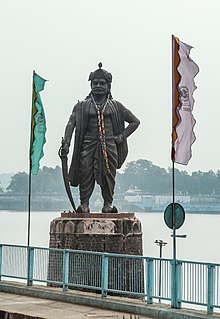
The 11th century Paramara king Bhoja ruled from his capital at Dhara (Dhar in present-day Madhya Pradesh, India). The period of his reign is dated approximately 1010 CE to 1055 CE, although some historians believe that he ascended the throne before 1010 CE. Bhoja inherited a kingdom centered around the Malwa region, and made several attempts to expand it varying results. He managed to annex territories as far as northern parts of Konkan, but these territorial gains were short-lived. He fought wars against several of his neighbours, including the Chaulukyas of Gujarat, the Chalukyas of Lata, the Chalukyas of Kalyani (Western Chalukyas), the Chandelas of Jejakabhukti, the Kachchhapaghatas of Gwalior, the Chahamanas of Shakambhari, the Chahamanas of Naddula, and the Kalachuris of Tripuri. He also conflicted with Gaznavid Turk Invaders,[1] Mahmud's desecration of the Somnath temple in Gujarat motivated Bhoja to lead an army against him, however after Somnath raid, Mahmud Gazhnavi chose a more dangerous route via Sindh, to avoid facing the invading powerful armies of Bhoja.[2][3]
Apart from epigraphic records, much of the information about Bhoja's military campaigns comes from legendary accounts, including Hemachandra (12th century), Merutunga's Prabandha-Chintamani (14th century), Rajavallabha's Bhoja-Charitra (15th century), and Ballala's Bhoja-Prabandha (17th century).
- ^ Krishna Narain Seth 1978, pp. 155–156.
- ^ Krishna Narain Seth 1978, pp. 162–163.
- ^ Mahesh Singh 1984, pp. 60–62.